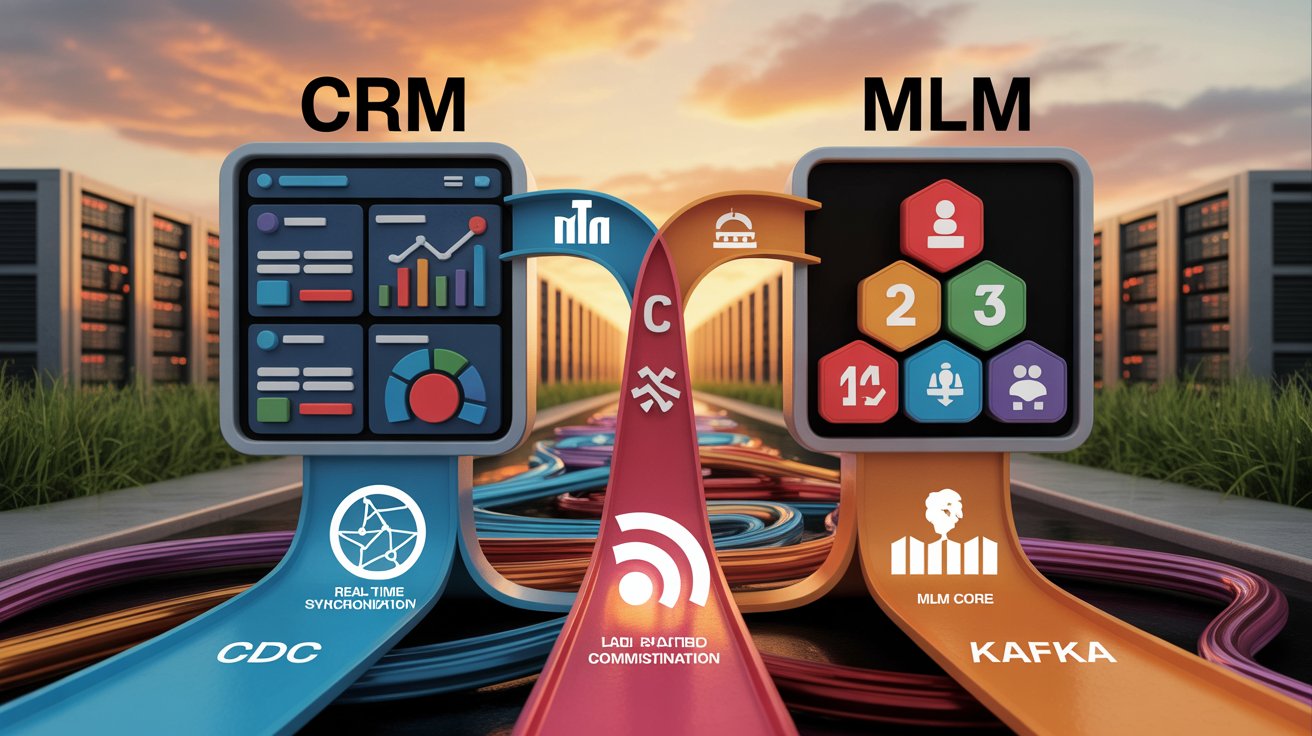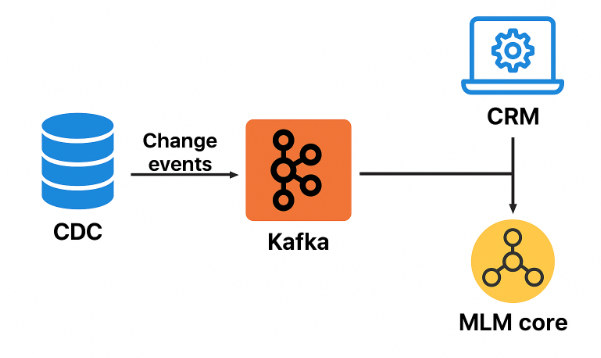

Real-Time CRM Sync for global MLM platforms ensures instant, accurate data flow between distributors, customers, and corporate systems—no matter where they are in the world. It connects every sales activity, lead update, and commission change in real-time across multiple CRMs and regions, eliminating delays and inconsistencies. This seamless synchronization empowers distributors with up-to-the-minute insights, enables faster decision-making, and strengthens operational efficiency for growing international MLM networks.
Multi-level marketing relies on fast, accurate data: lead handoffs, commission calculations, rank updates, and support tickets all require timely, consistent information across CRM, e-commerce, and core MLM systems. Real-time CRM synchronization—moving changes as they occur rather than in batch—improves responsiveness and conversion, but it also introduces complexity. Below are practical best practices, the most common pitfalls, and current industry trends to help MLM operators implement reliable real-time sync.

MLM businesses run on relationships and timing. A lead contacted within minutes is far more likely to convert than one called hours later; similarly, distributors expect near-instant commission visibility and accurate downline status to make decisions. CRM adoption and market growth show firms investing heavily in integrated sales stacks: CRM markets and adoption are growing rapidly, making strong CRM integration a core competitive capability for MLM platforms.
[ DemandSage ]
There are three primary architectural approaches to real-time sync:
CRM platform emits an HTTP event to your endpoint when records change. Simple to implement but sensitive to rate limits, retries, and payload variation. Integrations driven by webhooks often operate in the seconds-to-minutes range depending on throttling and processing.
[ Integrate.io ]
Your system queries the CRM at intervals. Lowest integration complexity but highest latency and API cost; suitable only where “near-real-time” (minutes) is acceptable.
[ Routine Automation ]
CDC streams database-level changes (or platform events such as Salesforce CDC) into an event pipeline. This delivers millisecond-to-second latency at scale when engineered correctly and is the modern pattern for low-latency, high-reliability sync. Benchmarks show CDC solutions can deliver millisecond-level performance in production and bounded seconds under peak loads. For event buses like Kafka, well-tuned clusters support sub-second end-to-end latency.
[ Trailhead , Integrate.io ]
📊 illustrative latency chart for a visual comparison –
Use CDC/Event bus for mission-critical flows: commission updates, rank calculations, payout triggers, inventory adjustments. These need low latency and ordering guarantees.
Use webhooks for lightweight notifications (new lead arrived, form submission) with safe retry handling.
Reserve polling for low-frequency, low-impact data (daily metrics, summary syncs).
Define strict schema/versioning for the event payloads. MLM data structures (upline/downline relationships, commission rules) are complex—breaking changes cause cascading errors.
Idempotent handlers prevent duplicate side effects when events are retried.
For commissions and rank updates, ordering matters—use sequence numbers or event streams that preserve order.
Don’t process directly on webhook arrival; enqueue events into a durable buffer (managed queue or stream) to smooth bursts and support retries.
Measure producer, network, processing, and consumer latencies separately. Alert when latencies creep toward thresholds that could affect affiliate payouts or lead response SLAs.
Build compensating transactions and audit trails. When a downstream system is down, mark events for later reconciliation rather than blocking upstream operations.
Use signed webhooks, mTLS, token-based auth for APIs, and role-based access controls. MLM systems handle sensitive financial and PII data—compliance matters.
Periodic full reconciliations detect missed events or drift. Maintain a reconciliation window (e.g., 24–72 hours) and implement automated fixes or human alerts.
👉 Try the official MLM Software Demo for Your MLM Business
and experience what MLM Software looks like when it’s powered by the best.
💌 Or, check out our blog to compare top direct‑selling companies, get insider reviews, and learn how to grow your income ethically in the wellness niche.
Real-time CRM sync is not a bolt-on feature—it’s an architectural choice. For MLM businesses where commissions, ranks, and customer follow-ups directly affect revenue and morale, investing in an event-driven, CDC-backed pipeline pays dividends in reliability and speed. But success requires strict data contracts, replayability, monitoring, and a plan for partial failures. Use webhooks where simplicity suffices, but for core financial flows choose CDC/event buses and design for scale.
Q1. What is real-time CRM synchronization in MLM?
Real-time CRM synchronization ensures that every data change—like new leads, sales, or rank updates—is instantly reflected between the MLM system and CRM using technologies such as CDC and Kafka.
Q2. Why is real-time CRM sync important for MLM businesses?
It helps maintain accurate commissions, faster distributor responses, and seamless customer experience by eliminating data delays or mismatched records across platforms.
Q3. What are the common methods for real-time data sync?
Common methods include webhooks, polling, Change Data Capture (CDC), and event buses like Apache Kafka for low-latency, high-volume data flow.
Q4. How does CDC improve MLM CRM integration?
Change Data Capture captures database changes in real-time and streams them to other systems, ensuring up-to-date data across CRM and MLM platforms without heavy API polling.
Q5. What are the main pitfalls of CRM sync in MLM?
Common pitfalls include ignoring API rate limits, lack of schema governance, missing event replay capabilities, and treating the CRM as a single source of truth for computed values.
Q6. What is the role of Kafka in MLM synchronization?
Kafka acts as an event bus that queues and distributes CDC events to multiple consumers—like CRM, analytics, or payment systems—ensuring ordered, durable, and real-time data delivery.
Q7. How can MLM companies secure CRM synchronization?
By using encrypted connections, token-based APIs, signed webhooks, and access controls while monitoring event flows for suspicious data anomalies.
Q8. How do you measure CRM sync performance?
Track latency metrics, success/failure rates of event processing, and SLA adherence to ensure data consistency between CRM and MLM systems.
Q9. Can real-time CRM sync improve distributor retention?
Yes. When distributors see instant commission updates and real-time progress tracking, trust and engagement rise significantly.
Q10. What’s the best tool stack for real-time MLM sync?
An optimal stack includes CDC tools (Debezium, Fivetran, StreamSets), Apache Kafka or AWS Kinesis for event streaming, and APIs to connect CRM platforms like Salesforce, HubSpot, or Zoho.